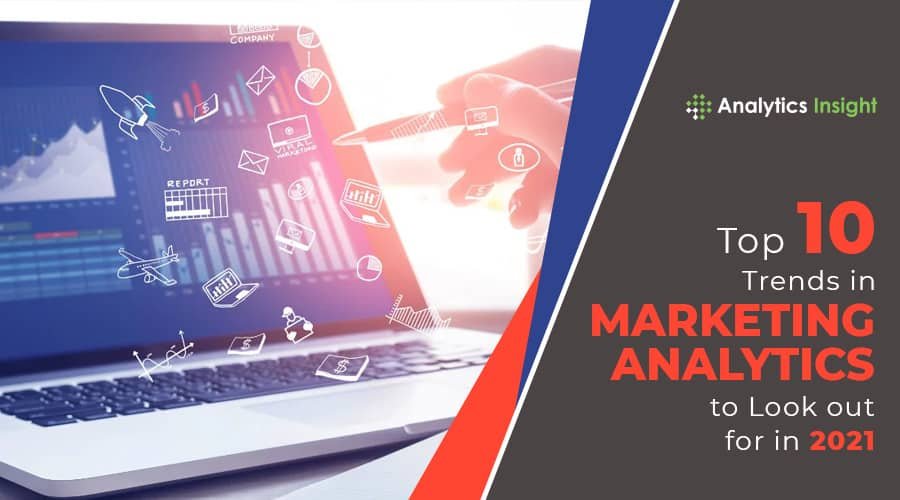Source – https://www.analyticsinsight.net/
Marketing Analytics Enable Business Organizations to Transform
With an objective to evolve interminably, business organizations and companies deem marketing analytics as to the crucial slices in the realm of marketing as they are the primary drivers of successful markets. Marketing analytics promise to deliver more bottom-line impact. Especially, in times of uncertainty, which tends to inflict adversities on markets, market analytics assist to assess and evaluate the appropriate statuses of markets in order to pave ways for better planning and loss compensation.
With a paradigm shift in 2021, marketing analytics is turning virtual that comes with the backings of machine learning and artificial intelligence. It enables business organizations to improve their target advertisements and remarketing strategies to optimize their ads through advanced marketing attribution, thereby, increasing customer loyalty and customer retention.
Analytics Insight anticipates the ten best marketing analytics trends that can be leveraged for a business facelift.
The Best Marketing Analytics Trends
The Rise of Real-time Marketing Analytics
Action reciprocations in real-time is a soaring trend, induced by Covid. Business organizations and companies strive to revert back with solutions to customer queries in real-time. Organizations run low-latency customer data platforms to let marketers know about the current position and the success of their marketing campaigns and strategies.
Real-time marketing analytics also help marketers to detect underlying threats and problems. Underlying threat detection in a market is also known as SWOT analysis.
Emphasis on Data Security and Regulatory Compliance
Insulating market data against cybercrimes and cyber breaches is an important issue of address today. 2021 has witnessed a heightened increase in data breach cases that have also fractured the business infrastructures to degrees unimaginable. This has led marketers to invest more in technologies that facilitate encryption, access control, network monitoring, and physical security measures.
Customer Privacy and Data Handling
Protection of consumer and customer privacy is also imperative for marketers. To materialize consumer and customer privacy, marketers are deploying software by which users can opt-out, purging out data once a user has left a problem.
Accelerating Adoption of Predictive Analytics
Predictive analytics, as the name suggests, helps to anticipate future outcomes, based on the analyses of historical data of an organization. Predictive analyses are executed using software powered by machine learning. Predictive analytics encompasses a look-alike modeling structure, which identifies prospects that are likely to turn into high-value customers.
Enhanced Investment in First-Party Data
2020 marked the extinction of third-party cookies when Google announced the exodus of third-party cookies out of Chrome. Cookies are important to track customer behavior on a business website.
However, in order to make up for the loss, marketers turned to invest more in first-party data that also ensured low-friction tracking of customer and consumer behavior. First-party data are also termed as ‘cookies-less’ entities.
The Emergence of Contextual Customer Experience
With the fall of third-party cookies, contextual customer experience has gained prominence. Marketing analytics has become sensitive towards contextual customer experience.
In the practice of contextual customer experience, marketers are able to employ target messaging based on inferred attitudes of their customers and where are they in their customer journey.
Enhanced Reliance of Third-party Sources
Despite the fall of third-party cookies and the rise of first-party data, marketers will continue to invest in third-party sources that lay out a robust view of customers along with the augmentation of the first-party data they collect.
According to a study conducted by IAB and Winterberry Group in 2020, marketers in the U.S. spend over US$1.19 billion on third-party sources. The numbers have witnessed a steep rise in 2021.
Vehement Adoption of AI and ML
With a rise in AI and ML culture worldwide, marketers are also deploying artificial and machine learning for the refurbishment of their business infrastructures to make them suitable for a virtual world.
A Mix of Marketing and Analyst Roles
In a modern world driven by technology, a marketer performs more than just marketing. The paradigm shift demands marketers to possess analytical skills as well. The spotlight is always on the specialists who mix analytical and marketing skills in a balanced manner.
Investments in Inbound Marketing
The dramatic shift from in-person to work from home has made inbound marketing more prominent with its proven effectiveness. Inbound marketing has emerged to be instrumental in increasing brand awareness and trust-building through refocusing strategies that drive traffic to a website.
Marketers in 2021 are investing heavily in inbound marketing tactics to ensure the evolution of their businesses.
